
Spring anemones: planting, growing, care and use
Contents
Spring anemones in a nutshell
- Spring anemones offer early flowering in colours ranging from white to red, including blue
- Bulbous perennials, anemones multiply each year, eventually forming attractive tapeta
- They are appreciated for the woodland atmosphere they create and for the delicacy of their flowering
- Anemones are also used in borders or planters
- Easy to care for, anemones favour well-drained, moist and fertile soils
A word from our expert
Very hardy, adapting easily to many conditions, anemones offer from spring the vibrant colours of their flowering: white, red, blue or pink. This early flowering thus brings a border or bed to life in spring but can also be used to create genuine floral tapetum beneath trees. Easy to care for, anemone requires no special attention and will enchant, spring after spring, gardens everywhere. It will find its place as well in woodland as in a flower bed, a border, a rockery or a mixed-border.
Among spring-flowering anemones, several species can be distinguished, the best known being the Caen anemone, also called the crowned anemone or florists’ anemone (Anemone coronaria), the Wood Anemone (Anemone nemorosa), the Forest Anemone (Anemone sylvestris) and the Greek Anemone (Anemone blanda).
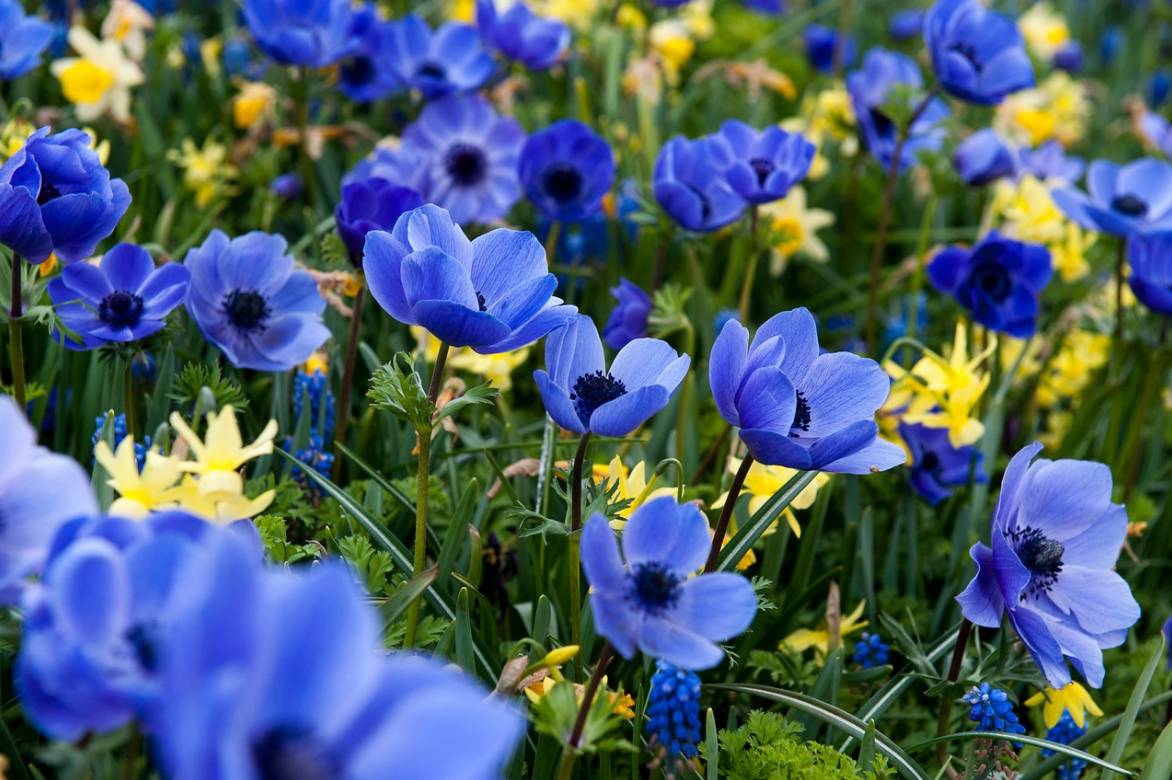
Bulbous or rhizomatous, depending on species anemones thrive in shaded or semi-shaded positions, in fresh, humus-bearing soil, but without excessive moisture. Planting is best carried out in autumn. Perennials, anemones will multiply over the years and make a good groundcover.
Many varieties are well known to gardeners, such as the famous crowned anemones, but more modern cultivars are also available and offer double flowers or colours full of delicacy.
Description and botany
Botanical data
- Latin name Anemone sp
- Family Ranunculaceae
- Common name Anemone
- Flowering from March to June
- Height between 15 cm and 50 cm
- Exposure sun, partial shade or shade
- Soil type rich, humus-bearing, fresh but well-drained
- Hardiness Very good
The genus Anemone comprises nearly 115 species, with a natural range extending across Europe, Asia, North Africa and into America. In France, Florist’s anemones can be found in their natural habitat in the Mediterranean region, while wood anemones occur in forests and damp meadows throughout the country. Anemone blanda originates from mountainous areas of Greece and Turkey.
Like buttercups, Anemone belong to the family Ranunculaceae. The main cultivars of spring-flowering anemones belong to four species:
- Anemone coronaria, or crown anemone, also known as the Florist’s anemone for its traditional use in bouquet-making. These old-fashioned, brightly coloured flowers can be single (Caen anemone) or double (Anémones St Brigid) and most often have a dark centre.
- Anemone blanda, or Greek anemone, with daisy-like flowers in a range of shades.
- Anemone sylvestris, or forest anemone: a wild anemone with a slight fragrance and tall flower stalks, ideal for bouquet-making.
- Anemone nemorosa, or wood anemone: also wild, this species forms pretty groundcover with simple, often white flowers.
Geophytes, anemones all possess an underground storage organ, which varies by species: a tuberous rootstock for Anemone coronaria, rhizomatous roots for Anemone sylvestris and Anemone nemorosa, and a tuberous root resembling a small bulb for Anemone blanda.

Anemone flowers: A. coronaria ‘Mr Fokker’, A. nemorosa, A. blanda ‘Blue Shades’ and A. sylvestris (photo Björn S – Flickr)
Above a basal rosette of deciduous foliage rises a flower stalk bearing a single flower. In Florist’s anemone and forest anemone, the length of this flowering stem makes them well suited to bouquet-making. Leaves are deeply divided and a handsome dark green, providing interest from spring. In Anemone nemorosa the foliage appears after flowering.
The number of petals depends on species: 5 for the simple flowers of Anemone sylvestris, 6 for Anemone coronaria, 6 to 9 for Anemone nemorosa and around fifteen for Anemone blanda, whose flowers recall those of daisies. Whether black, as in Florist’s anemone, or golden, the stamens often provide an additional attraction and draw the eye.
Wood anemone flowers open in response to light and follow the sun throughout the day. If sunlight disappears and is replaced by rain, the flowers then close and tilt to one side to preserve their charm. The flowering period is very variable depending on species: in early spring, from March for wood anemones and until June for Florist’s anemones.
Flowers are usually small: 3 cm for Anemone nemorosa and Anemone sylvestris, 5 cm for Anemone blanda and over 7 cm for Anemone coronaria. One drawback of anemones is the lack of scent in the flowers. Only Anemone sylvestris has a faint fragrance.

Caen anemones display a variety of colours and forms!
Fruiting prolongs interest in Anemone sylvestris: the decorative, silvery-coloured fruits form a tuft from which achene (dry, single-seeded fruit) are released, winged and carried by the wind.
Read also
Wood anemone: succeed in its plantingDifferent varieties of spring anemone
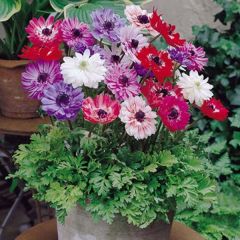
Anemone coronaria St Brigid Mix
- Flowering time May to July
- Height at maturity 45 cm
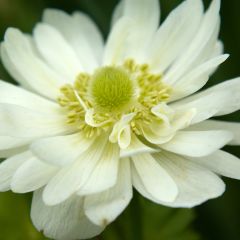
Anemone coronaria Mount Everest
- Flowering time June, July
- Height at maturity 40 cm
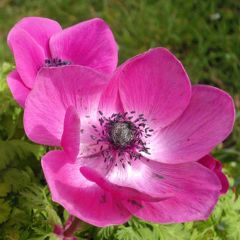
Anemone coronaria Sylphide
- Flowering time May, June
- Height at maturity 40 cm
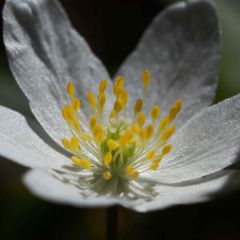
Anemone nemorosa
- Flowering time April to June
- Height at maturity 15 cm
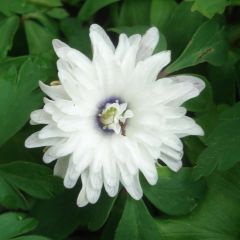
Anemone nemorosa Blue Eyes
- Flowering time April, May
- Height at maturity 10 cm
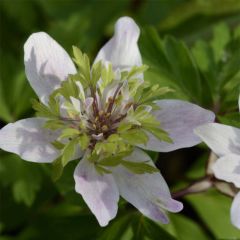
Anemone nemorosa Green Fingers
- Flowering time April, May
- Height at maturity 15 cm
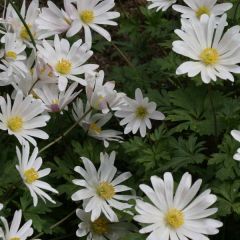
Anemone blanda White Splendour
- Flowering time April, May
- Height at maturity 15 cm
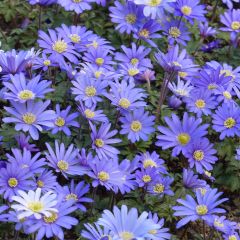
Anemone blanda Blue Shades
- Flowering time April, May
- Height at maturity 15 cm
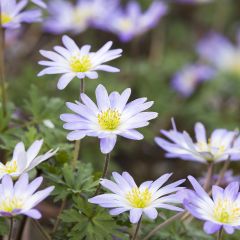
Anemone blanda Blue Splendour
- Flowering time April, May
- Height at maturity 15 cm
Discover other Anemone
View all →Available in 2 sizes
Available in 2 sizes
Available in 0 sizes
Available in 2 sizes
Available in 1 sizes
Available in 1 sizes
Available in 1 sizes
Available in 1 sizes
Available in 1 sizes
Available in 2 sizes
Planting anemones
Where and when to plant?
Anemones appreciate rich, moist but well-draining soils; stagnant moisture will cause bulbs to rot. If soil is too heavy, mix it with one third potting compost and one third sand. Anemone sylvestris, unlike other species, stays in garden in summer and dislikes soils that are too dry during that period. Beware planting under trees whose roots can dry out soil. Anemones do not like calcareous soils (basic pH, above 7); if you still wish to plant bulbs in calcareous soil, lower pH by mixing potting compost with heather soil.
To choose exposure for anemones, take inspiration from their natural habitat: Anemones that grow in forests (Anemone nemorosa and Anemone sylvestris) prefer shaded or semi-shaded positions, whereas those native to Mediterranean regions (Anemone coronaria and Anemone blanda) will enjoy sun or partial shade. If shade is too dense, florist’s anemone stems will become spindly and unable to bear flowers.
Best time to plant anemones is autumn, but planting is possible until the end of winter. In particularly cold areas, Anemone coronaria, which is more tender, will prefer planting in spring.
How to plant?
Further reading: Plant spring anemones and Plant wood anemones
Planting density depends on species and its growth: 200 plants per square metre for Anemone blanda, 70 for Anemone nemorosa and 50 for Anemone coronaria. More concretely, Anemone blanda should be spaced about 15 centimetres apart, and between 30 and 40 centimetres for Anemone nemorosa.
You can plant anemones directly in ground in garden, which is the simplest solution, but you can also choose to pot them first in a bucket before placing them where you want them to flower.
1) Planting directly in ground
- Rehydrate Greek anemones and florist’s anemones by leaving them to soak overnight before planting in lukewarm water. This step is not necessary for other species. Anemone nemorosa is supplied as a small section of root, preserved in a sachet. Turf in the sachet prevents the plant drying out; keep it indoors until planting.
- Work soil to loosen to about ten centimetres. Break up clods and remove stones if needed. If soil requires amendment (too heavy or too calcareous), make appropriate additions.
- Bury bulbs 5–6 centimetres deep then firm soil.
- Water, even in winter.
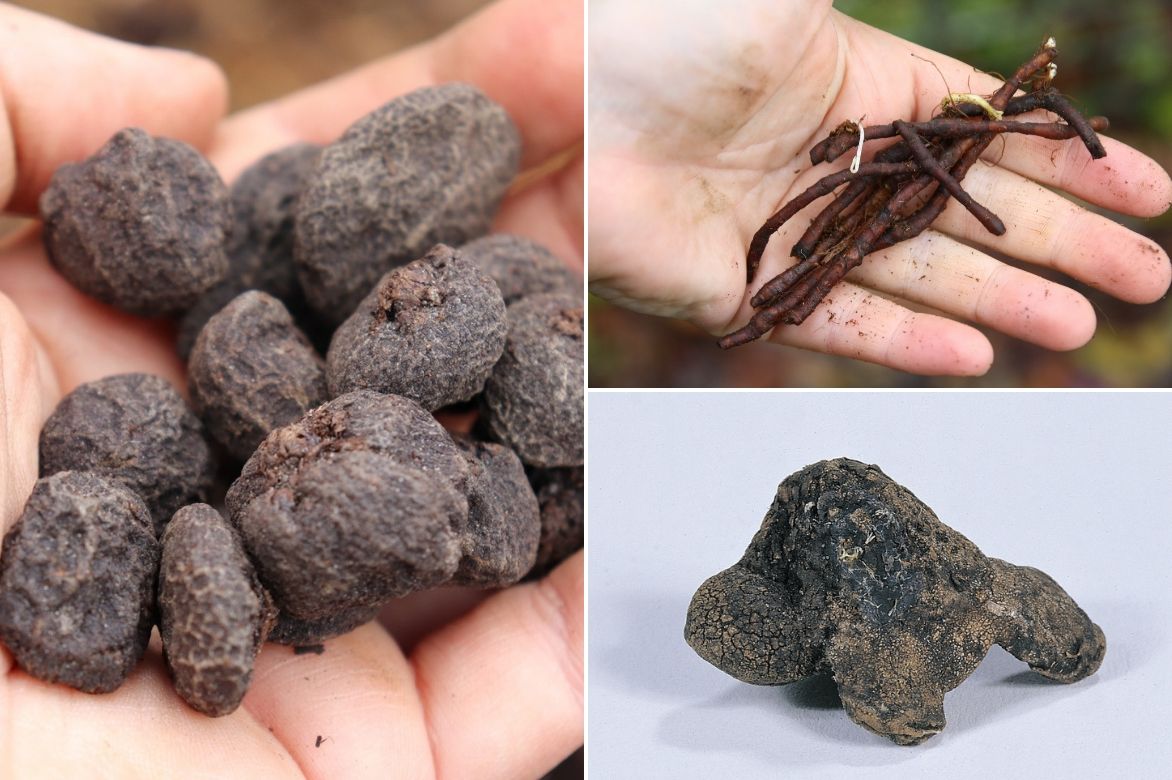
Anemone blanda bulbs, Anemone nemorosa roots and misshapen Anemone coronaria bulb
2) Planting in a bucket
If you receive plants at a time unsuitable for outdoor gardening, potting in a bucket can be a useful alternative.
- Fill a bucket with good potting compost.
- Place rootstock, root section or bulb at a depth of 6 centimetres.
- Cover with compost and water.
- Keep bucket moist, without excess, until first leaves appear.
- Your anemones are then planted like ordinary perennials.
- In spring, put plants in ground after digging a hole larger than bucket width.
- Place rootball at bottom of hole.
- Backfill then firm lightly.
- Water, even if soil is moist.
Propagation of anemones
As with most geophytes, multiplication is mainly by division of clumps.
To do this, at end of summer when plants are still dormant:
- dig up the stump,
- use a cutting knife, previously disinfected, and cut the stump in two,
- then plant the two parts separately,
- don’t forget to water to help plants re-establish.
Sowing is possible but slow and delicate. High temperatures (35°C) help break dormancy. For modern cultivars, sowings can differ, sometimes markedly, from parent plants, especially if different varieties are present in the garden. After sowing, plants go through a juvenile period, sometimes long (three years for Anemone sylvestris) before flowering. However some species, notably Anemone nemerosa, self-seed spontaneously in the garden. Seeds are harvested as soon as they start to detach, then sown as soon as possible while still fresh. In a sowing tray, place the seeds and keep it without excess moisture, in semi-shade. Seed germination occurs within three months of sowing.
Care
Anemones spend much of the year in a dormant phase, foliage disappears just after flowering and plants remain inactive for nine months. Consequently maintenance is relatively easy: no pruning, no watering during summer, … Only Anemone sylvestris retains its foliage during summer and will therefore be more prone to summer drought.
Anemone is a plant very hardy, tolerating temperatures well below zero. It is therefore not necessary to lift your anemones in autumn; they will overwinter in the ground without problem.
Anemones are relatively resistant to disease and to predators, although attacks of rust, mildew and smut are sometimes observed. Only a high susceptibility to nematodes is likely to affect your anemones. To avoid these attacks, plant anemones alongside marigolds (Tagetes patula). Read also our article on diseases and parasitic pests of Anemones.
Only step not to miss: adding compost in autumn. Wood anemones are used to receiving nutrients in autumn from the decomposition of fallen leaves. Imitate their natural medium and add well-rotted compost, humus or a mulch of fallen leaves. With the soil’s richness thus preserved, anemones will multiply and return year after year.
Combining spring anemones
Anemone lends itself perfectly to compositions that evoke woodland. Plant it with shade or part‑shade plants that tolerate competition from trees, such as Hosta, ferns, Polygonatum (Solomon’s seal), Epimedium (barrenwort), or Heucheras.
Anemones can also be planted in a perennial bed or among bushes. Early‑flowering, they will provide first splash of colour before other leaves appear.
When mixed with other bulbs, Anemones are very useful for forming flower tapetums from early in the year. Read our tips to make best use of these small bulbs.
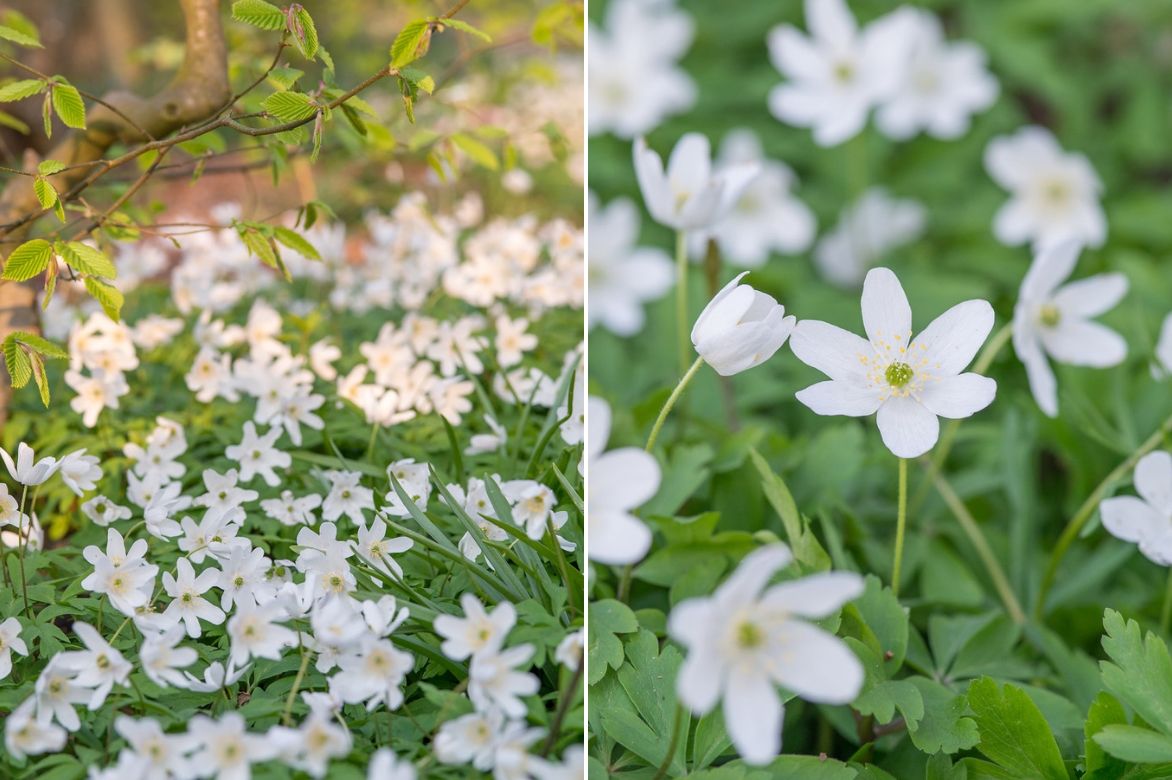
Wood anemones quickly form beautiful flower tapetums
→ Discover other pairing ideas for Anemone blanda
Did you know?
- A mythological origin
In Greek anemos means ‘wind’ and anemone ‘daughter of the wind’. Anemones are sometimes called flowers of the wind because of the ability of their seeds to move, carried by the wind.
In Greek mythology Anemone was a nymph who was loved by Zephyrus, god of the west wind. His jealous wife transformed his rival into a flower. In Latin mythology, anemones sprang from tears of Venus mingled with blood of her lover Adonis.
Useful resources
- Discover our anemone collection.
- Our care sheets: Growing Anemone blanda in a pot and Growing Anemone de Caen in a pot
- Discover our ideas for combining wood anemones
- Subscribe!
- Contents


































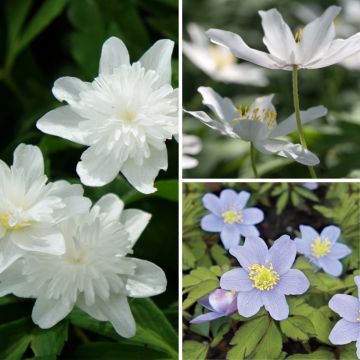

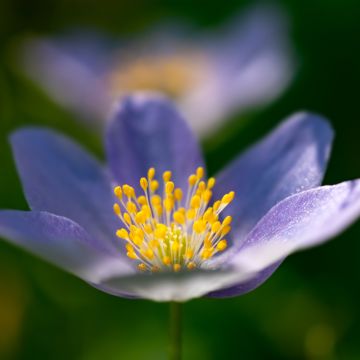
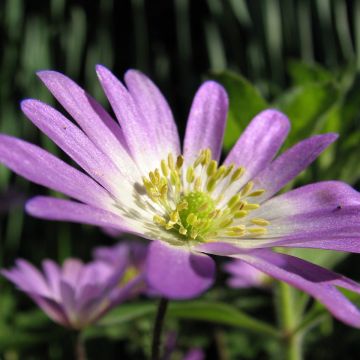
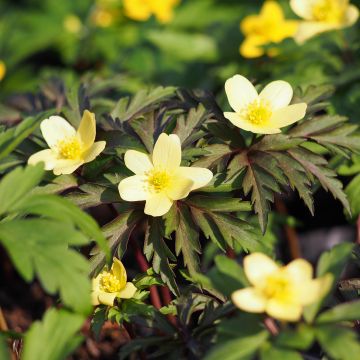

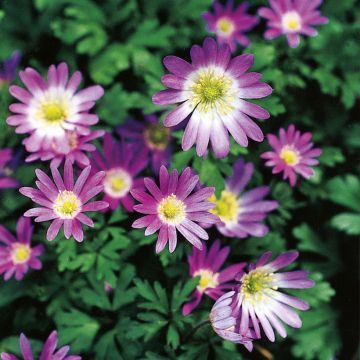
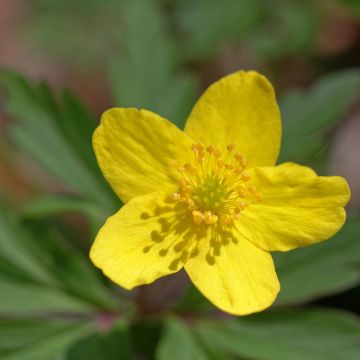
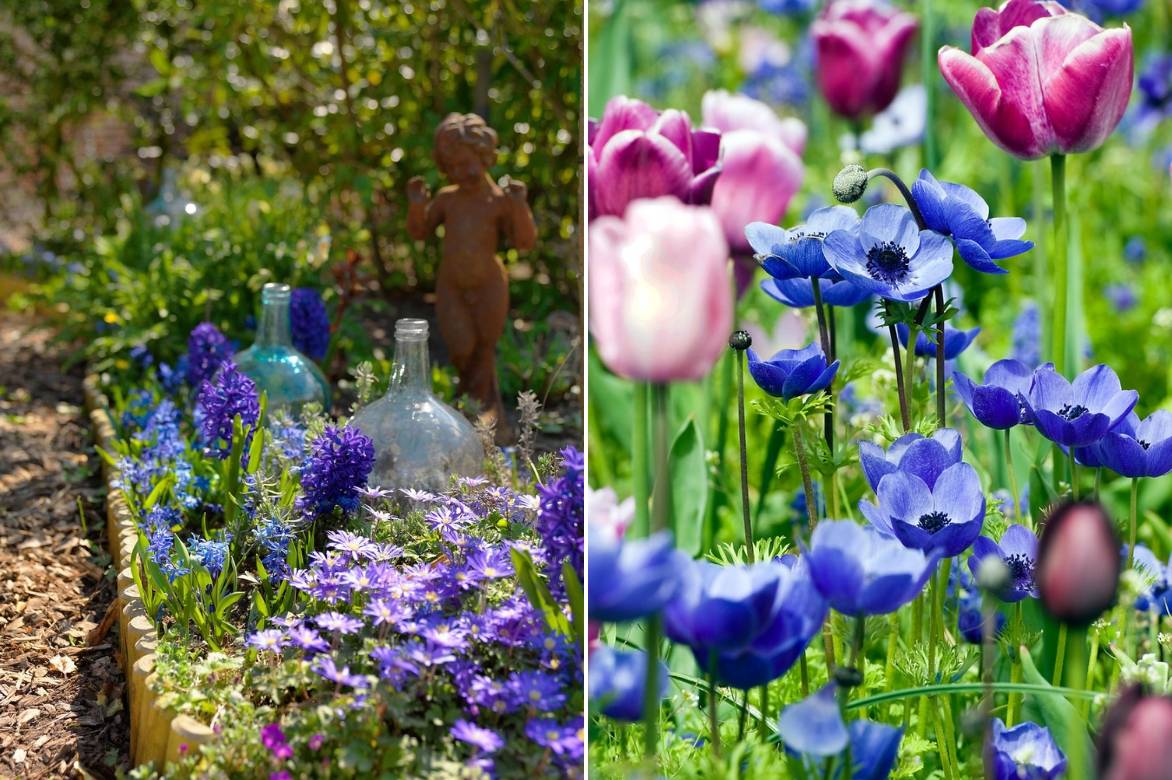
Comments